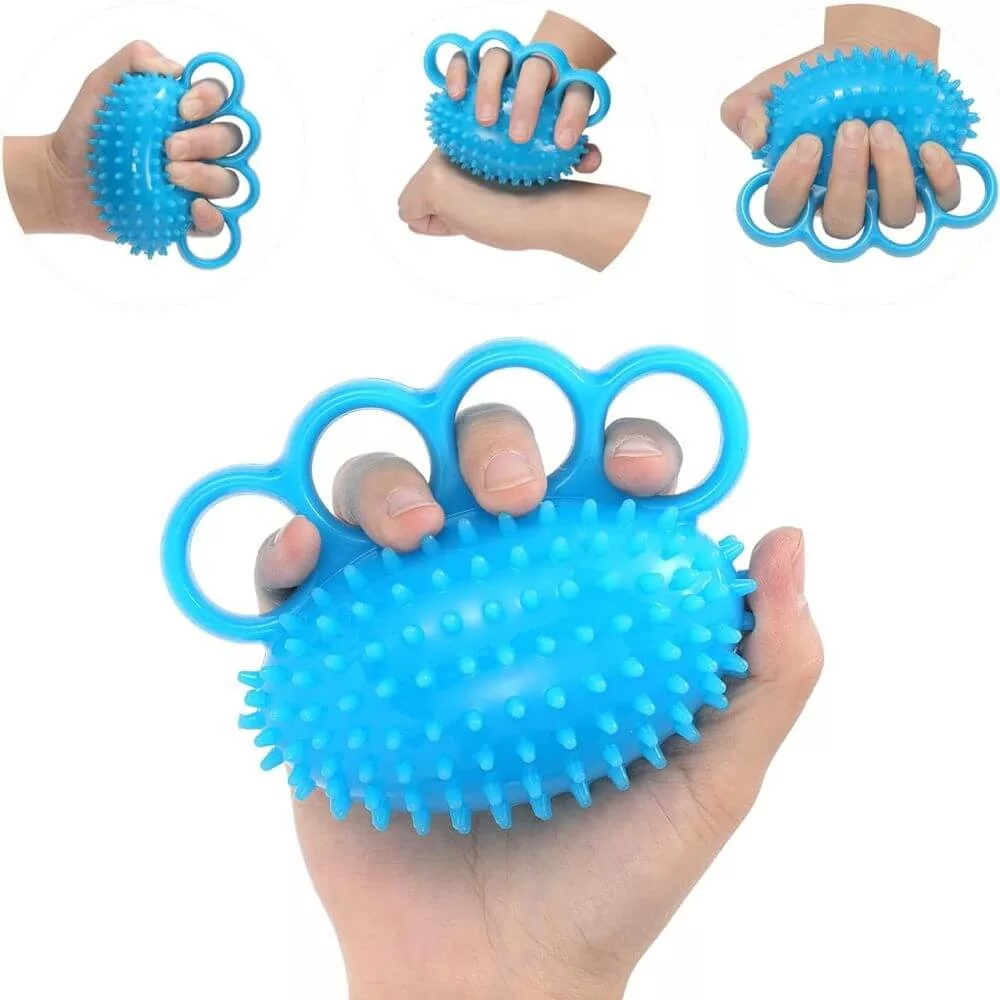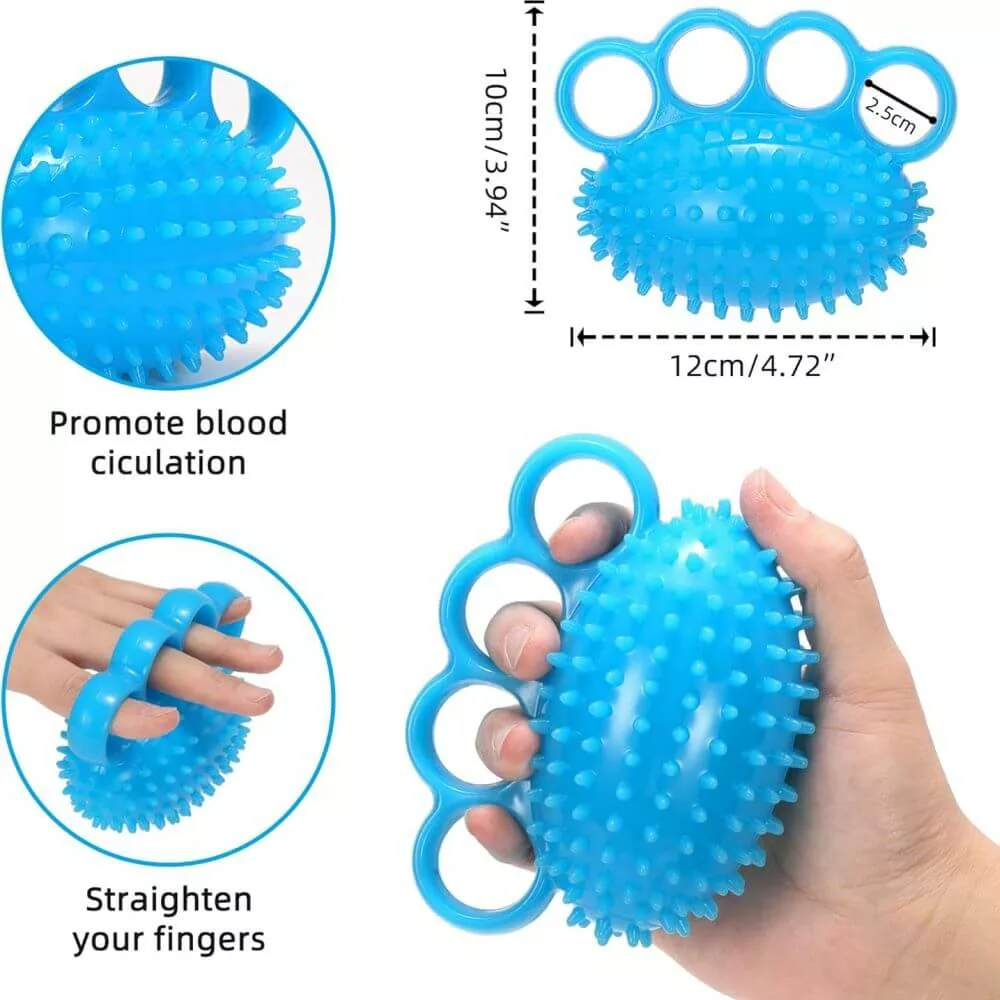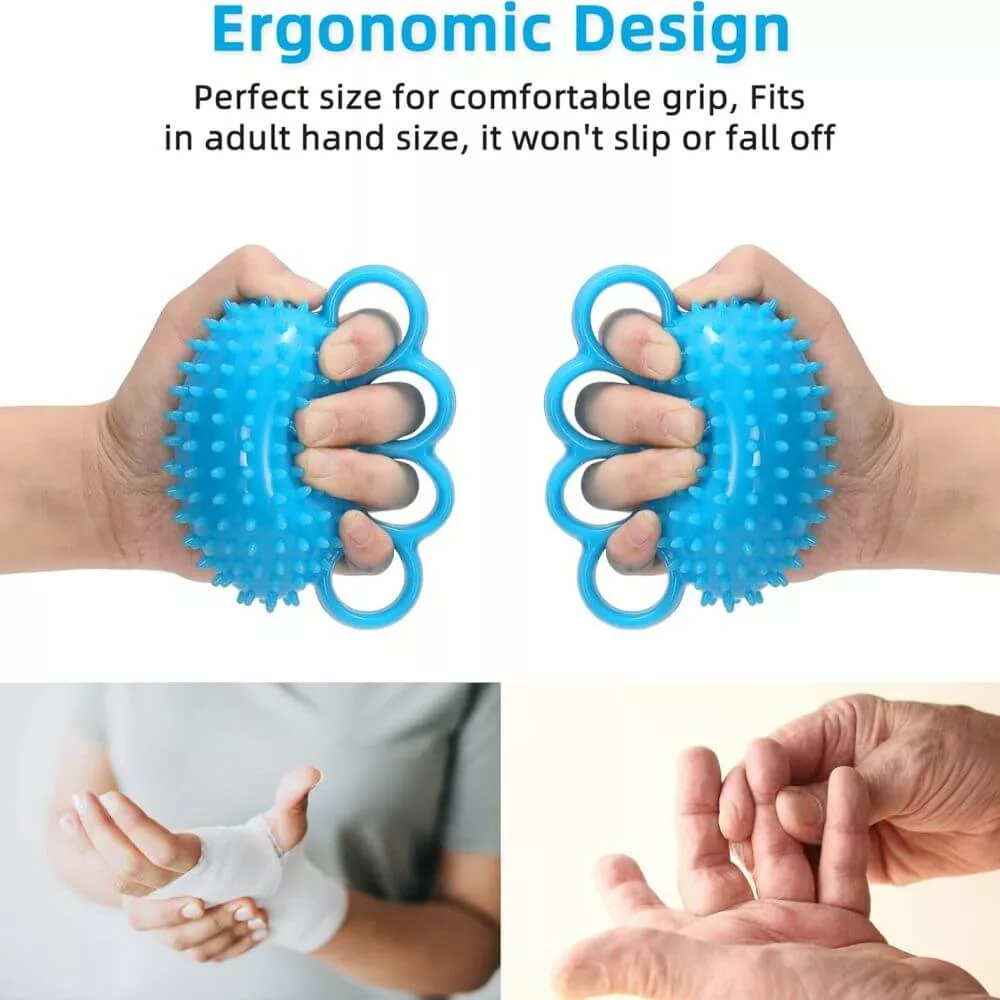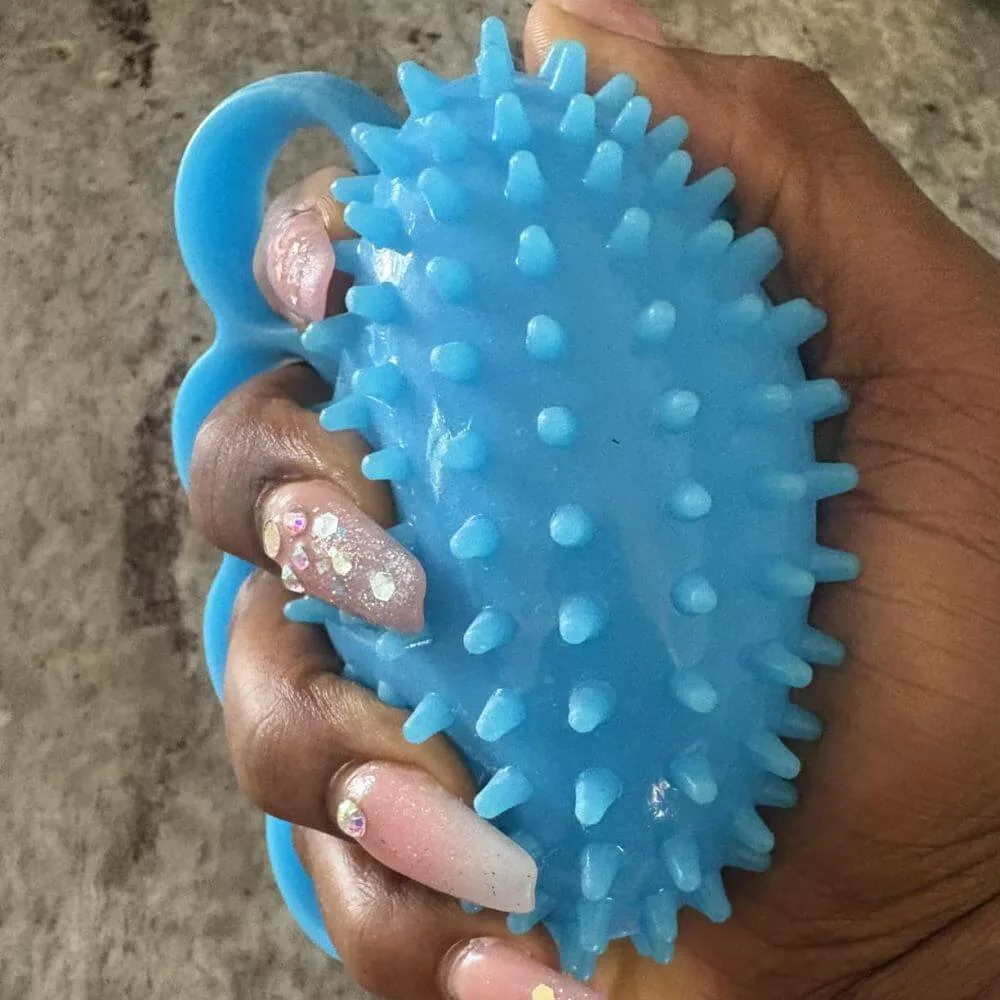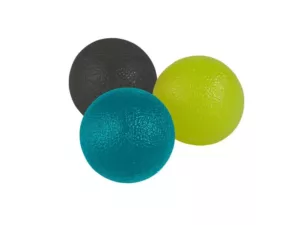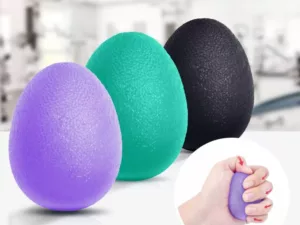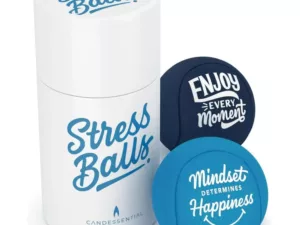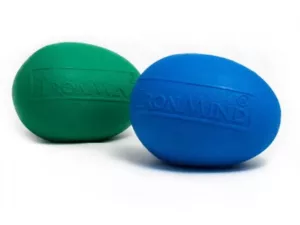(Last Updated on November 10, 2025 by Henry)
- Name: Fanwer Hand Therapy Exercise Ball
- Category: Hand Therapy & Rehabilitation Ball
- Purpose: Finger Stress Relief & Mobility
- Rating: 4.3 / 5 stars
- Availability: Amazon (Prime Delivery)
- High-Elasticity Material: Made from premium thermoplastic elastomers for comfort
- Ergonomic Size: Designed to fit the natural curve of the hand for safe squeezing
- Dual Functionality: Ideal for hand therapy, stress relief, and light grip strengthening
Not Sure, How to Treat Grip-Related Pain?
Explore My Guides on Recovery & Injury Care for Hands.
What Is the Fanwer Hand Exercise Ball Finger Therapy Ball?
Overview:
When I first came across the Fanwer Hand Exercise Ball, I immediately recognized it as one of those deceptively simple tools that can make a big impact in hand therapy.
This compact, textured squeeze ball is primarily intended for rehabilitation, grip conditioning, and stress management. Its lightweight, non-slip surface provides smooth, uniform resistance that feels natural during repetitive squeezing or pinching motions.
Its true strength lies in its therapeutic application. Whether you’re recovering from arthritis, carpal tunnel, or post-surgery stiffness, or simply want to maintain hand mobility as you age, the Fanwer Ball delivers safe, progressive engagement for hand and finger muscles.
While it’s also marketed as a stress relief aid, its role in restoring flexibility and blood flow makes it far more than a desk toy; it’s a clinically useful rehabilitation tool.
What Are the Pros & Cons of the Fanwer Hand Exercise Ball?
Balanced Feedback Based on Real Rehabilitation Use
- Effective Hand Therapy Aid: Provides light-to-moderate resistance ideal for recovery from arthritis, tendon injuries, or post-surgery stiffness.
- Soft, Resilient Texture: High-quality TPE material balances comfort with durability for daily therapy sessions.
- Stress Relief Functionality: Offers tactile feedback that helps calm nerves and reduce tension during long workdays.
- Ergonomic Shape: Fits comfortably in most adult hands without strain, allowing controlled pressure from all angles.
- Rehabilitation Versatility: Useful for both strengthening and mobility exercises in therapy routines.
- Durable Construction: Maintains elasticity and form even after hundreds of compression cycles.
- Travel-Friendly Design: Compact and lightweight, easy to carry for on-the-go stress or therapy sessions.
- Limited Resistance Range: Available only in one firmness level (light-medium).
- Not Ideal for Strength Athletes: Too soft for maximal grip power development.
- Size Variability Feedback: Some users find it slightly large for smaller hands.
- Temperature Sensitivity: May feel firmer in colder environments.
Still Deciding?
Compare it With Other Hand Rehab & Therapy Tools.
Fanwer Hand Exercise Ball Ranking 86 out of 100
Good Therapy Tool
My Rating Summary
- Overall Build Quality: 8.8 / 10
- Ease of Use: 9.4 / 10
- Comfort: 9.0 / 10
- Value for Money: 9.2 / 10
- Therapeutic Effectiveness: 9.0 / 10
Technical Details
- Weight: 50 grams
- Diameter: Approx. 5 cm
- Color: Blue
- Material: Thermoplastic Elastomers
- Manufacturer: Fanwer
Who Can Benefit from the Fanwer Hand Exercise Ball?
Rehabilitation, Recovery & Everyday Hand Health
The Fanwer Therapy Ball is most effective for users in the early or moderate stages of hand rehabilitation. Its elasticity provides resistance without aggravating inflammation, essential for sensitive recovery phases.
It’s ideal for arthritis sufferers, stroke recovery patients, post-surgery users, office workers, seniors, musicians, and artists seeking to maintain or rebuild finger mobility and fine motor control.
This Training Tool Mainly Targets Crush Grip Hand Movement
One of the 5 Primary Hand Movements.
How Can You Benefit from Using the Fanwer Hand Exercise Ball?
Gentle Resistance for Functional Recovery and Relaxation
From a therapeutic standpoint, this ball bridges pain management and active rehabilitation. Squeezing it engages the forearm flexors, tendons, and intrinsic hand muscles, promoting circulation and reducing stiffness.
Over time, this repetitive motion improves coordination and neuromuscular responsiveness.
Many users also find that its tactile feedback has a calming, stress-relieving effect, supporting both mental and physical recovery.
Can You Use the Fanwer Hand Exercise Ball for Rehab?
Purpose-Built for Controlled Recovery and Mobility
Absolutely. Rehabilitation is precisely where this device shines. The Fanwer Hand Exercise Ball supports progressive rehabilitation for arthritis, carpal tunnel, post-cast stiffness, and dexterity recovery.
Its ergonomic shape allows repetitive, low-impact squeezing that strengthens tendons and joints without causing strain, making it suitable for clinical and home-based therapy alike.
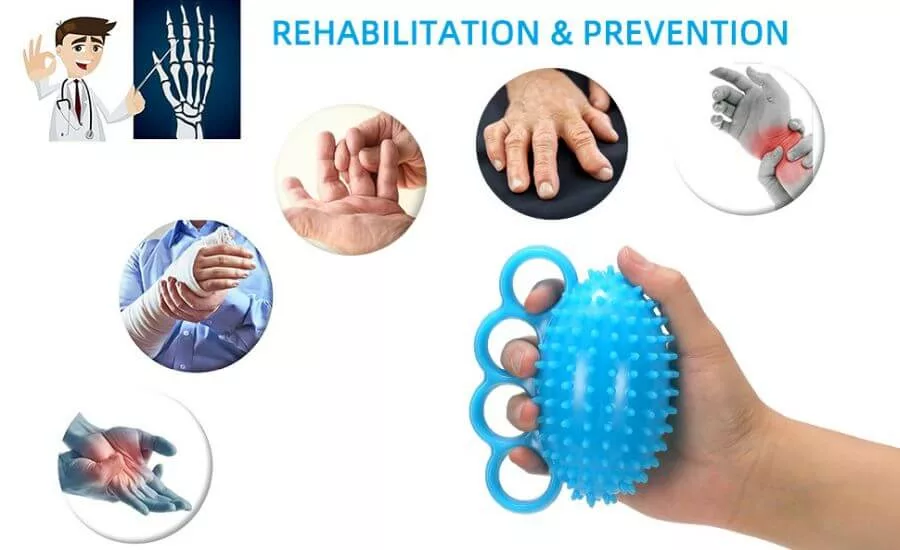
First-Hand Experiences & Why It Works
Comfort, Consistency & Controlled Resistance
From my own use, I find the Fanwer Hand Exercise Ball highly effective for building forearm comfort and finger flexibility. After just a week of consistent use, I noticed reduced stiffness and greater control in my hand movements.
Users on Amazon also echo this experience, many reporting improved circulation, reduced numbness, and relief from morning arthritis stiffness.
Therapists also appreciate its predictable resistance curve and smooth texture, both crucial for structured rehab sessions. Overall, it’s one of the simplest yet most effective therapy tools I’ve used.
Final Verdict: Is the Fanwer Hand Exercise Ball Worth It?
A Simple, Proven Tool for Restoring Comfort and Control
From my experience, the Fanwer Hand Exercise Ball is a worthy addition to any recovery or wellness routine. It’s not meant for building brute grip power; its focus is rehabilitation and comfort.
For arthritis management, injury recovery, or everyday mobility training, it encourages safe, mindful movement that reduces stiffness and improves function.
If you want a low-cost, reliable therapy solution that truly delivers, this ball earns a confident recommendation.
Thanks for Stopping By
Have Questions or Experience with an Exercise Ball?
Share Your Thoughts Below
Looking for a Guide on How to Treat RSI Instead?
Or, Check Out My Grip Training FAQ for Quick Answers.

